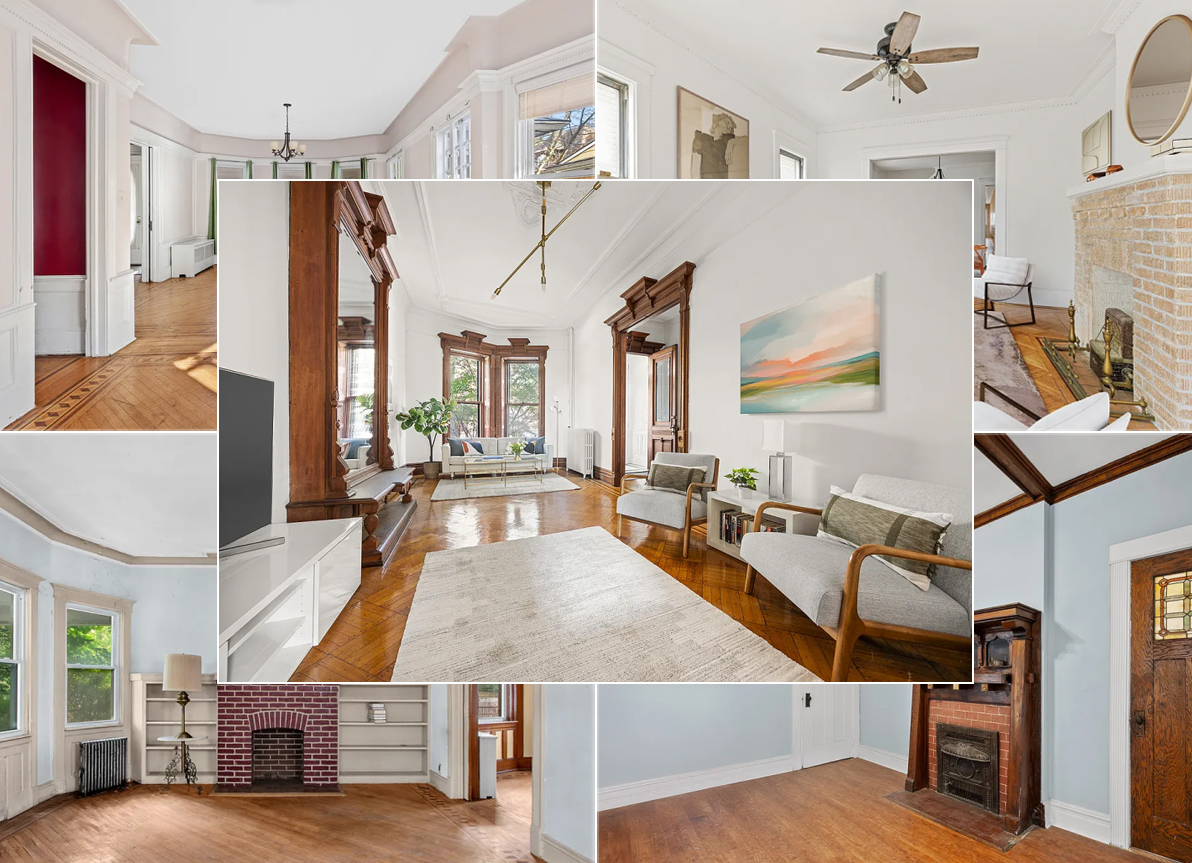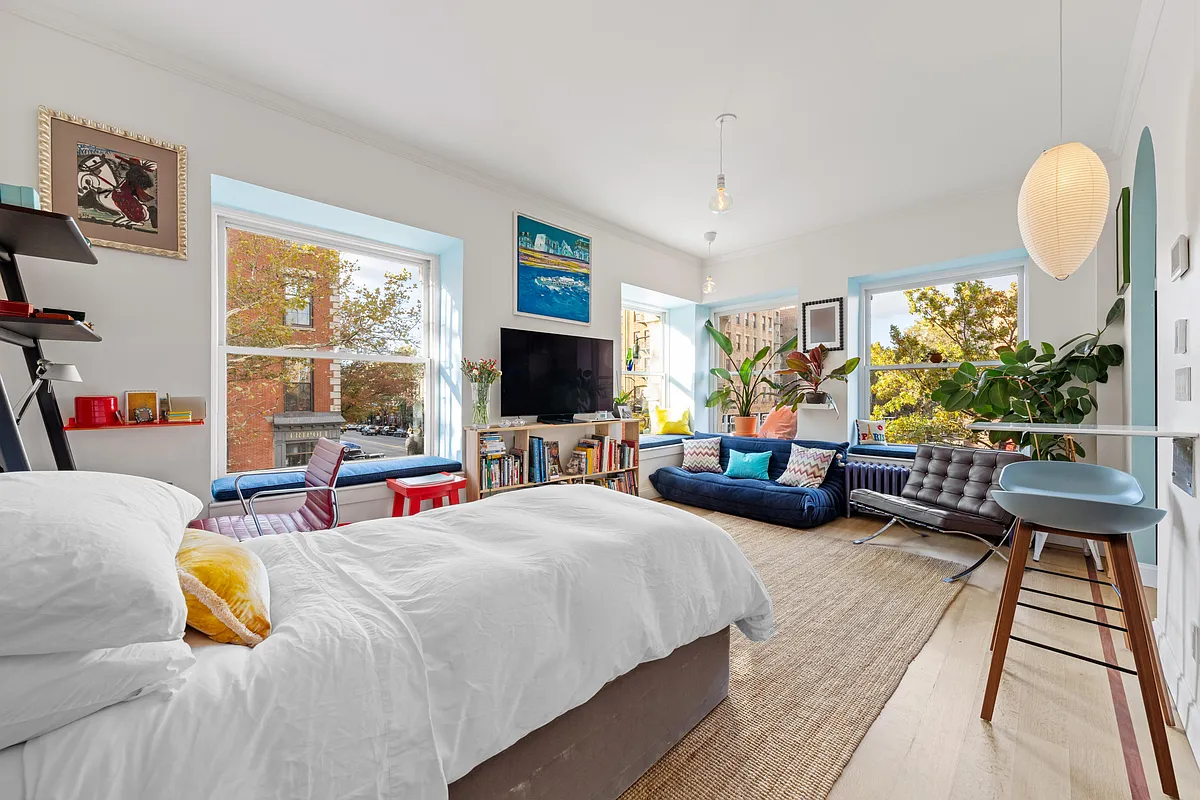PLG: Pump Up The Volume, Dance, Dance
Despite the best efforts of our resident troll (who gets more insane every day), all signs point to boom times in Prospect Lefferts Gardens. Of the five houses listed currently on Brown Harris Stevens, for example, three are in contract (including this place that has been on the market forever) and another (the Ocean Avenue…


Despite the best efforts of our resident troll (who gets more insane every day), all signs point to boom times in Prospect Lefferts Gardens. Of the five houses listed currently on Brown Harris Stevens, for example, three are in contract (including this place that has been on the market forever) and another (the Ocean Avenue house featured in OHP two weeks ago) is tied up in a bidding war somewhere between 5 and 10 percent over ask. One reader who hit a bunch of the open houses this weekend said they were crawling with young couples priced out of Clinton Hill and Fort Greene and drooling at the comparatively low prices and proximity to the park. (New York Magazine was way out in front of this one back in ’05.) If you’re a long-term believer in Brooklyn, it’s hard to see how you can go wrong with PLG. But…are prices outpacing the reality of infrastructure, amenities, etc. or is the rest of the world just waking up and coming to its senses? (We would encourage people to sign in for discussions on this one as our little PLG toad will most likely be firing away full throttle in his best efforts to disrupt civil discourse.)
Photo from Planet PLG 2006 house tour slide show.





It doesn’t matter a hoot if hipsters “care” or not. The point is that their influx leads to service providers following. And that leads to amenities.
Occasional Teacher, would you please try to keep your posts to a reasonable length?
Anonymous at March 13, 2007 3:31 PM, wrote:
“My daughter goes to a wonderful school in Chinatown with a student body mostly from very poor families.”
What percentage of the students are asian?
You wrote:
“With an enterprising principal and a small group of parents who know how to write a grant proposal, the school has a great arts program (in addition to fabulous academics, wonderful teachers, first-rate teste scores, etc., etc.).”
That’s how the game is played.
You concluded:
“Great schools can be built on a shoestring. IMHO it starts with the principal, who can inspire participation by parents who can be supportive, even if it’s not a huge group.”
Yes and no. An average principal can achieve extraordinary results with the aid of involved parents. It is simply not possible for a principal to overcome the social pathologies students bring to school with them.
If you want a great school, first, you have to get a sizable bunch of good to great parents. They and their kids will crowd out the problems.
linusvanpelt, you wrote:
“OK. But this isn’t the 60s or 70s.”
True. But the school system is a major determinant for parents deciding whether to stay in the city or move to the burbs. With two kids in private school, the economics of the suburbs look pretty good.
Clearly, the city — Brooklyn — is a powerful draw these days. I don’t expect that to change anytime soon. But if the employees of the school system get the funding they seek, our relatively low city property taxes will start looking like those paid by our friends who scooted to the suburbs. If property taxes rise to suburban levels, sending kids to average city schools becomes painful.
You responded:
“Yes, and those reasons have largely to do with the kids’ home and economic backgrounds.”
Completely true. And NOTHING can be done about this.
You said:
“To hear it told, you’d think that we had an epidemic of kids from upper-middle-class white-collar homes going to public schools and turning into gang members and illiterates.”
That’s not what I hear. But at my neighborhood meetings I’ve heard many parents complain about the fact that their kids at Midwood High School are getting mugged on the way home by some of those kids who are NOT upper-middle-class white kids from white-collar homes going to public schools.
However, I think things have improved indirectly as a result of the muslim presence in the area. Cops on foot patrol are now visible in my neighborhood — West Midwood — every day. In the past, there was no foot patrolling. Only the occasional police cruiser rolling by.
Concerns about terrorism have led to the increase in the police presence.
You wrote:
“What we have instead is too many parents with time and resources choosing not to involve themselves in schools in ways that would benefit their kids, their neighbors and in the long run, all of us.”
An organization that functions as it should is expected to do so without a lot of outside help. A segment of our public school system gets along withou parental assistance. But that’s exactly the segment in which most parents want to participate.
Does PS 321 need ANOTHER parent to clog the hallways? There should be a special metric for that school noting the parent:teacher ratio.
The extraordinary need for volunteer effort from parents to keep schools from heading down the slippery slope into chaos is not a good sign. But that is one problem with all bureaucratic monopolies. Their effectiveness deteriorates. In most cases, the foundering organization simply disappears. But because we are talking about schools, that will never happen. Thus, the life-support system — free parental labor — becomes essential.
In any case, it’s a numbers game. When good parents and decent students outnumber the negative element, results improve.
My daughter goes to a wonderful school in Chinatown with a student body mostly from very poor families. With an enterprising principal and a small group of parents who know how to write a grant proposal, the school has a great arts program (in addition to fabulous academics, wonderful teachers, first-rate teste scores, etc., etc.). Great schools can be built on a shoestring. IMHO it starts with the principal, who can inspire participation by parents who can be supportive, even if it’s not a huge group.
And 3:02, would you seek to convince me that “young hipsters” are changing PLG for the better? It would take a mass exodus of renters both in PLG and the heavily dense areas immediately south to bring about the kind of changes the people above are speaking of. Remember – in PLG and adjacent areas there is no new high rise construction like there is in wburg and elsewhere. If there were, it would change the area fast. The process of replacing residents who don’t care with hipsters (who do?) to change the nabe will be long and slow, and even people who are complacent in terms of neighborhood progress and improvement will fight long and hard to keep their apartments. Not saying it won’t happen, but think 15 years, not 5.
Occasional teacher was right about P.S. 321 and funding: one reason it has better facilities and programs than many other public elementary schools is that the parents collectively raise and/or contribute hundreds of thousands of dollars for the school every year. That, and parents who are involved in general in their children’s education, makes all the difference. Of course, this model is hard to duplicate if you don’t have a coterie of highly educated stay-at-home mothers who have a lot of time to volunteer, which is the case in Park Slope.
Anon 2:48 PM,
One of the biggest RECENT changes in PLG has been the change in the APARTMENT buildings, with young middle-class people moving in.
This thread on today’s ATP is, perhaps, a bit tongue-in cheek, but it’s on the mark IMO:
http://acrossthepark.typepad.com/atp/2007/03/hipsterclaus_is.html
sorry, I meant landlords.